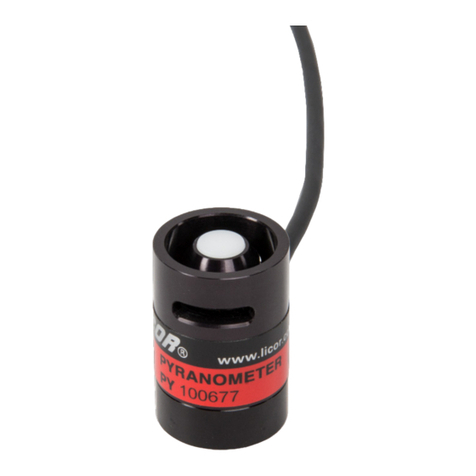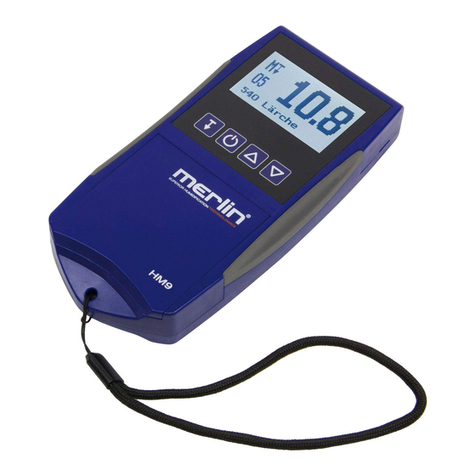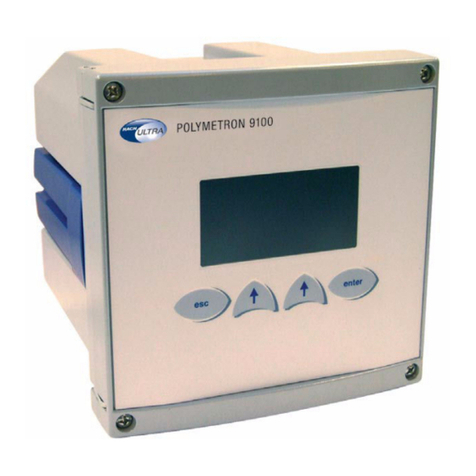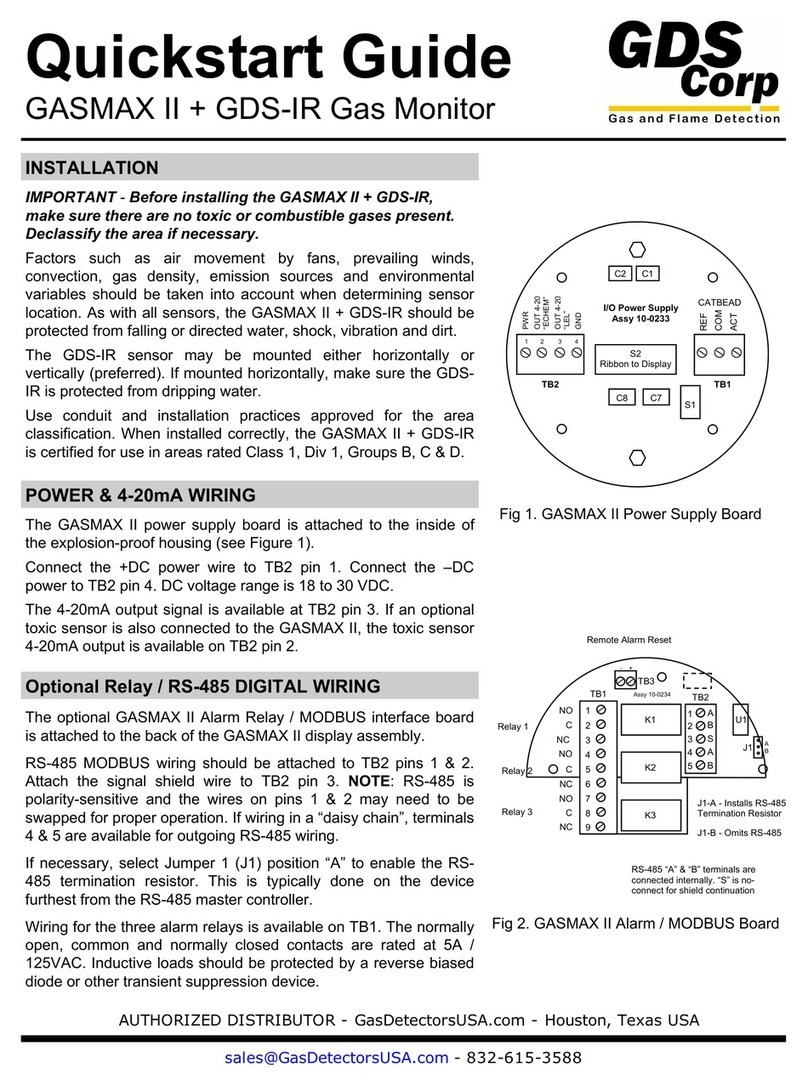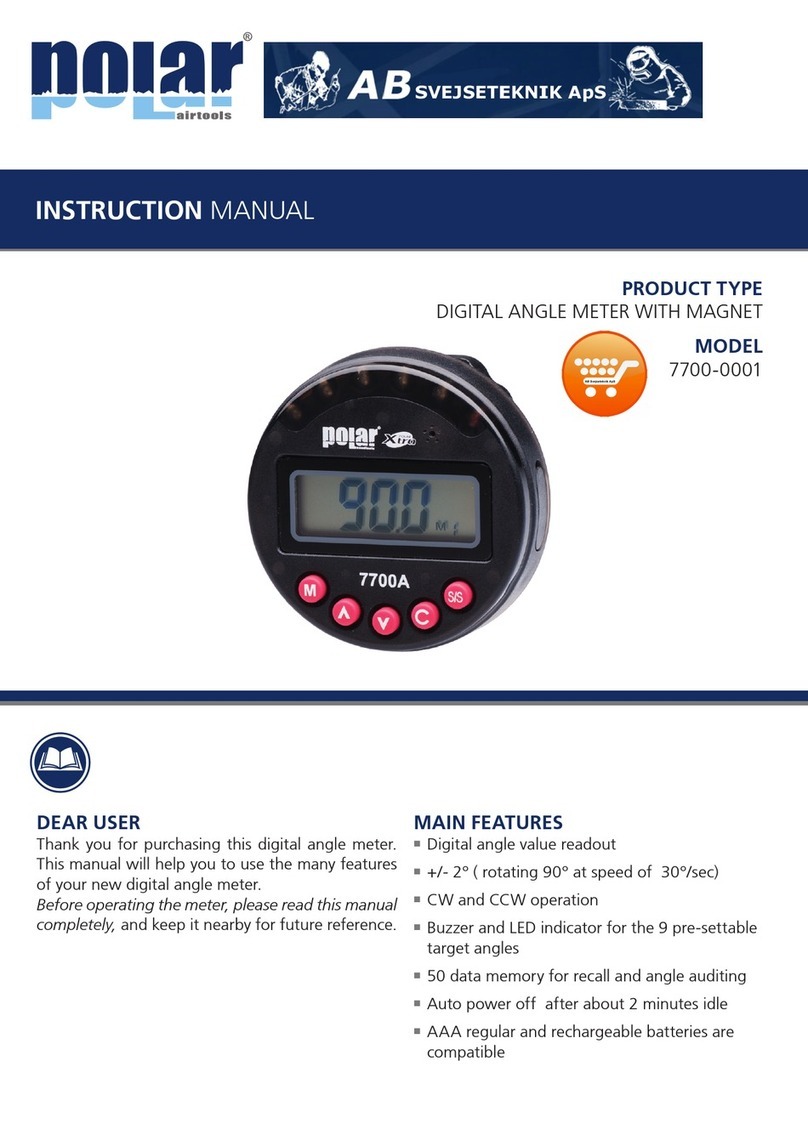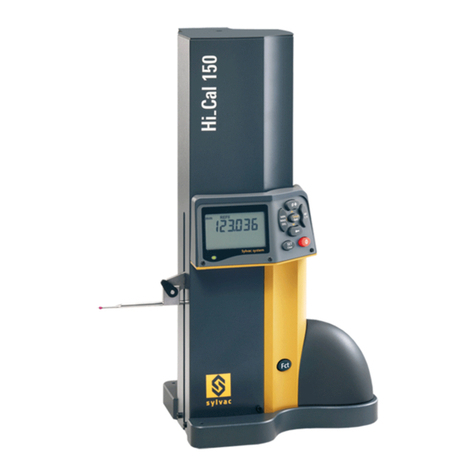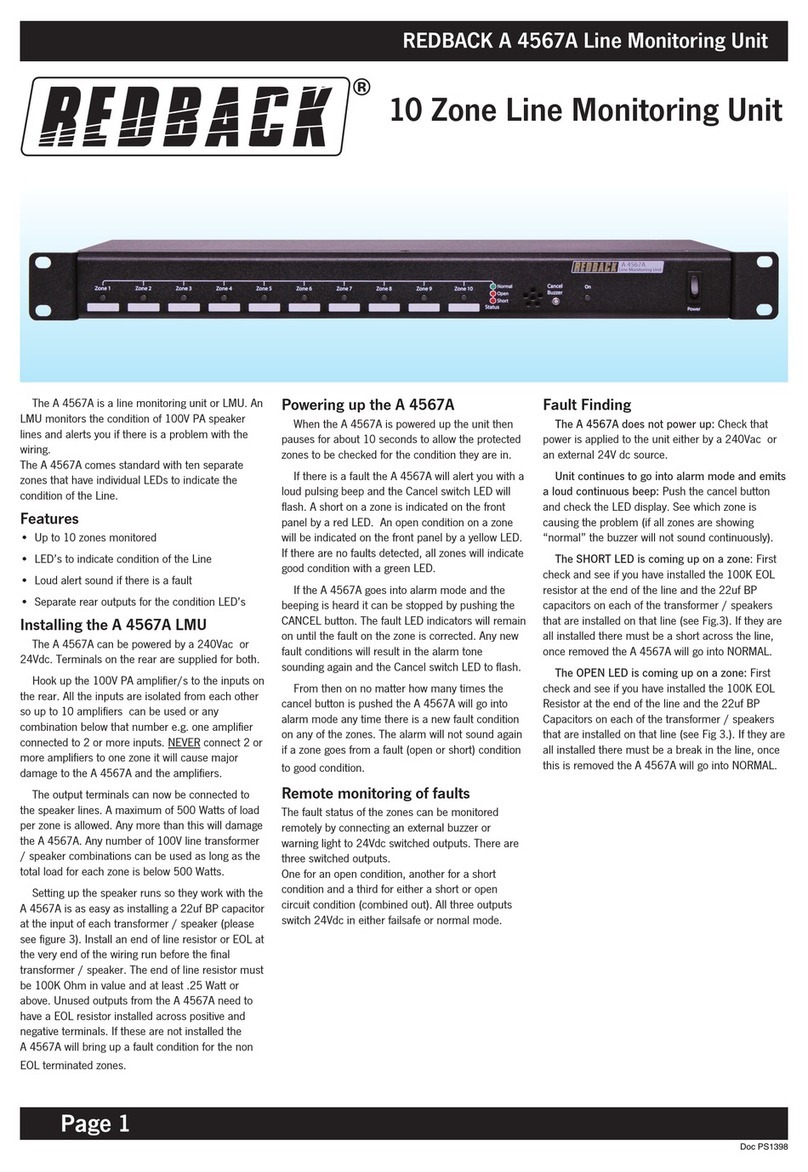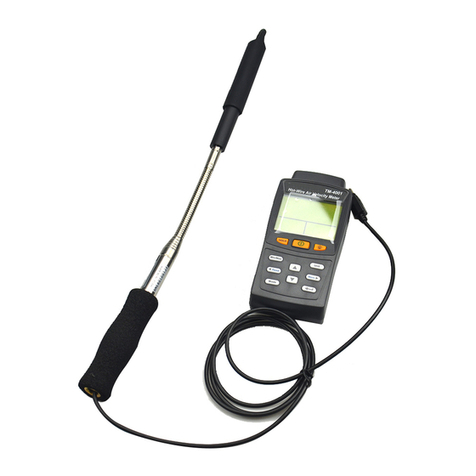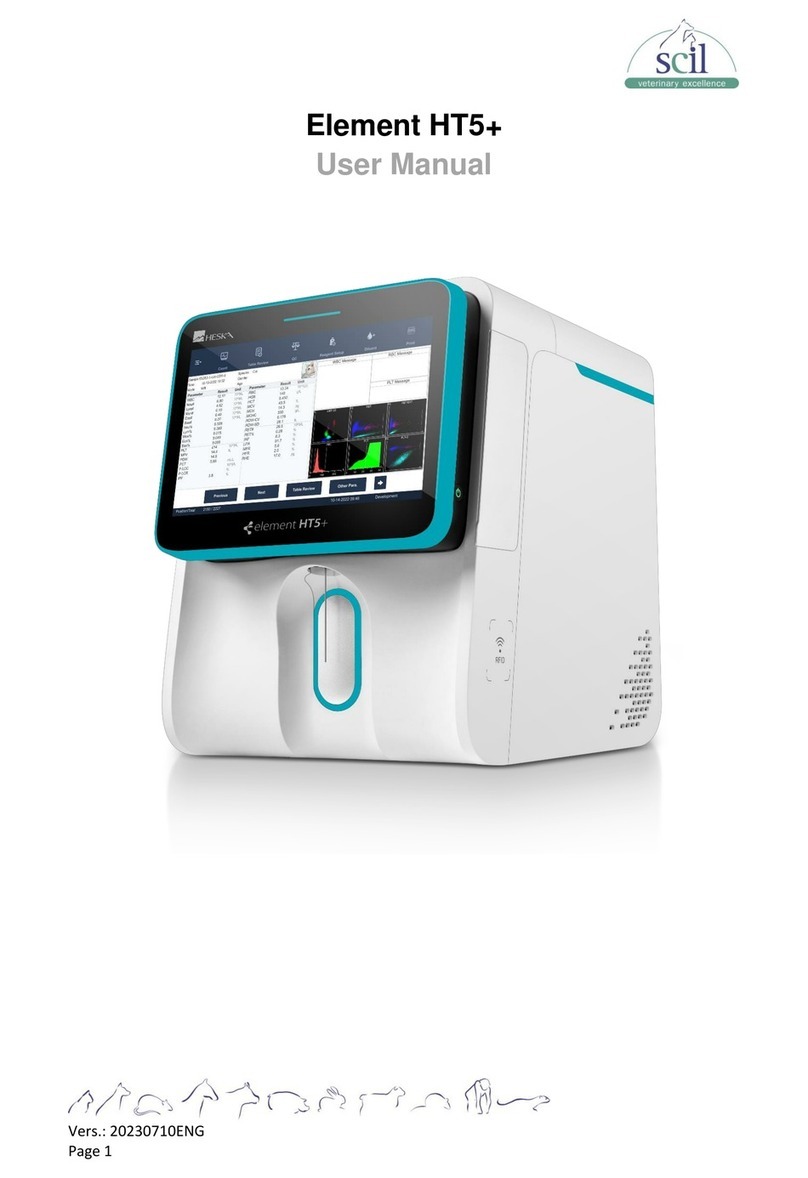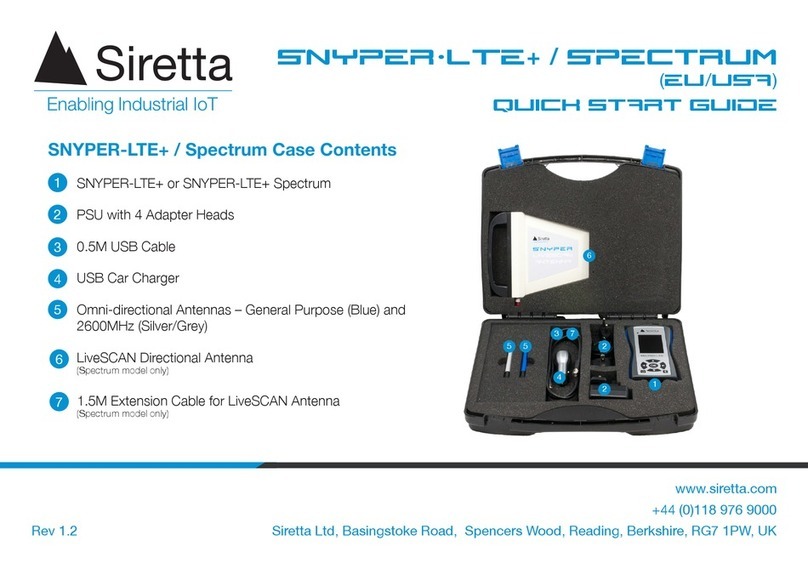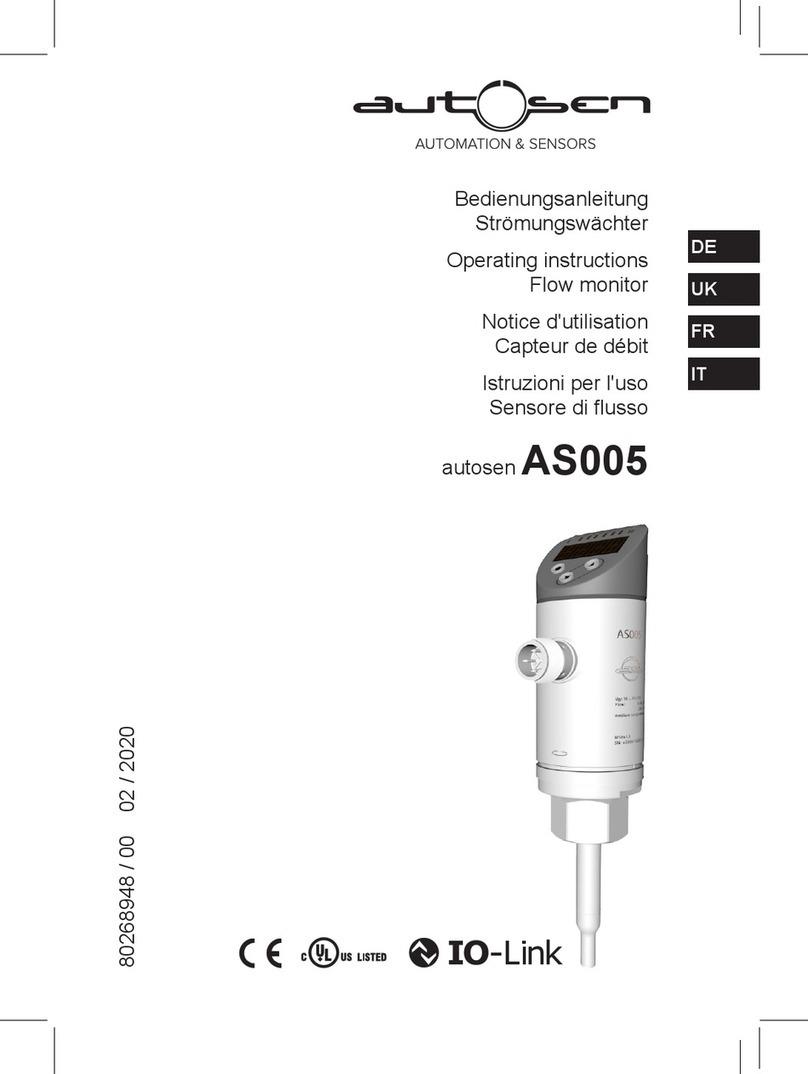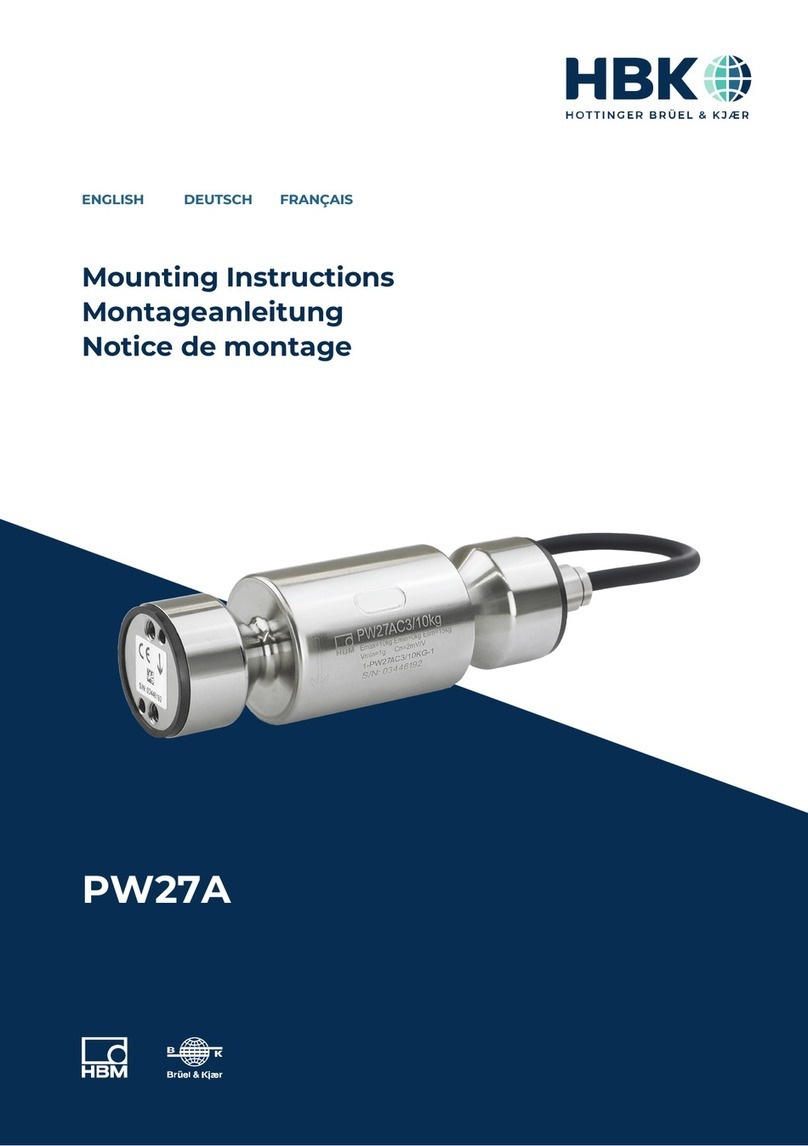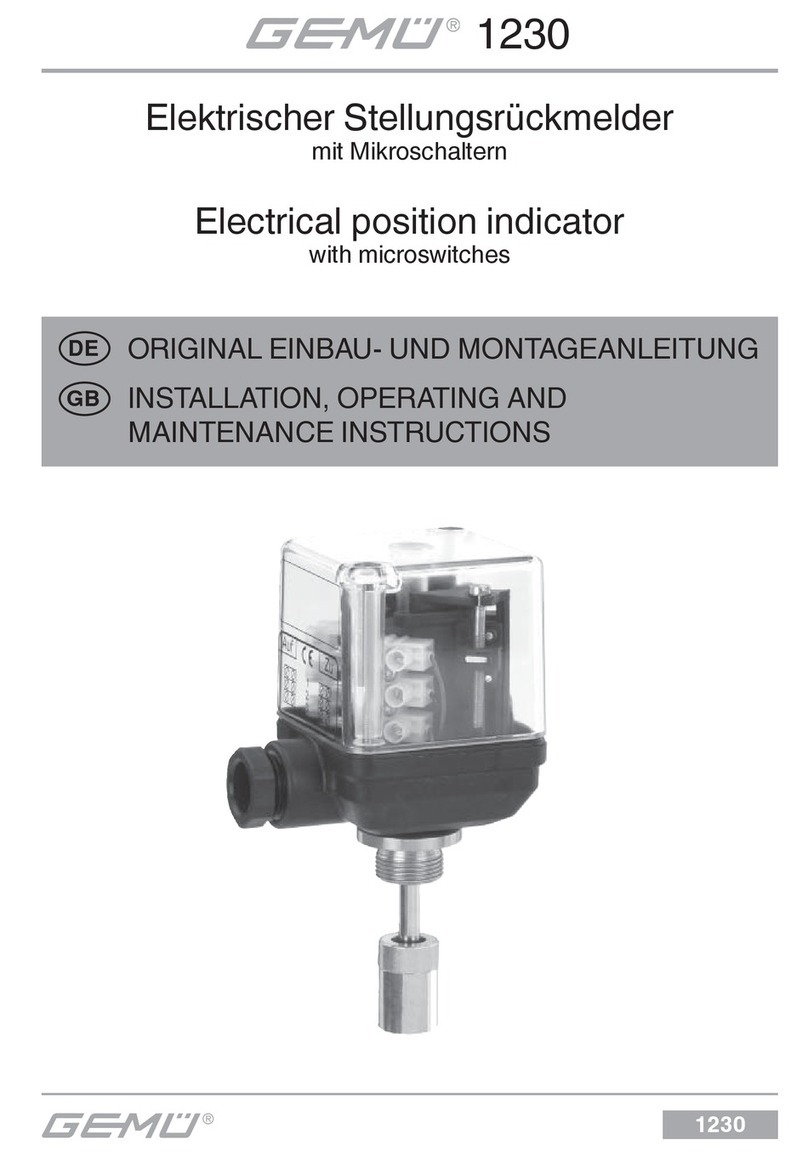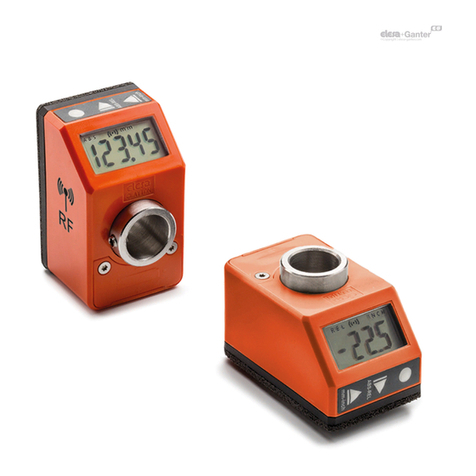FormFactor ACP40-GSG Series User manual

PN 153-231-B www.formfactor.com ACP40-GSG-xxx Probes • 1
Quick Reference Guide
ACP40-GSG-xxx Probes
The ACP40-GSG-xxx probe features include:
• Standard Pitch: 100, 125, 150, 200 and 250μm
• 40 GHz Ground-Signal-Ground footprint microwave probe with Air Coplanar tip and 2.92mm
(K™ compatible) precision coaxial connector
XXX defines the pitch (center-to-center spacing between adjacent probe fingers).
Your calibration kit coefficient definitions are found on the inside of the probe box lid.
Probe Handling/Installation
Before mounting, inspect the probe for signs of dirt or visible wear. Use a
positioner with a standard 3-pin microwave mount. Use the middle (guide)
pin to align the probe and two mounting screws to snug-tighten the probe
(use 9/64 Contact Substrate (PN 005-018) to planarize the probe using the
positioner planarization adjustment.
Use high-performance microwave cable with 2.92mm (K™ compatible)
connectors.
When connecting RF connectors, carefully mate the connectors and tighten them by rotating only the male connector nut.
Use an 8 in-lb calibrated torque wrench to tighten the connectors.
Use the positioner cable clamp to relieve cable strain on the probe. Do not overtighten the clamp.
When unused, always cover the probe precision connector with the plastic cap supplied with the probe.
Probe Viewing
Always observe the probe tips when making the contact with the DUT. With the microscope focused
on the DUT and the probe tips safely raised, the probe tips appear out of focus.
Use the x- and y-axis knobs to position the probe tip above the DUT contacts. Use the z-axis knob to
bring the probe tips down to the device.
Before making contact, make sure that the probe station chuck is in the contact position and that the
platen arm is fully down.
When contacting a device, watch the probe tips through the microscope. Do not use electrical
readout as a substitute for microscope viewing. Observe contact and skating, then look for electrical readout.
Positioner Arm Planarization
The probe tip itself is planarized with high precision. However, it may still be
necessary to planarize the positioner arm to conform the probe tip plane to the
plane of the device being probed.
CAUTION
Use care when installing or handling the probe. Do not touch, bump or snag the probe tip.
Do not bend or flex the microwave absorber.
!
Cable clamp
Positioner arm planarization
adjustment knob

PN 153-231-B www.formfactor.com ACP40-GSG-xxx Probes • 2
ACP40-GSG-xxx Probes
Observe the probe landing on the metal on the contact substrate. Raise the probe and adjust the planarization knob to
ensure that each finger in the probe tip leaves marks of the same size and depth.
Making Contact
The Air Coplanar probe is designed to be used with a nominal overtravel
(downward movement after initial touchdown) of 50-75μm. The resulting
skate (forward movement resulting from overtravel) is about 20-30μm.
To obtain contact on extremely non-planar surfaces, you can use up to
250μm of overtravel without damaging the tip, although increased
overtravel may reduce probe life.
Proper amount of overtravel for calibration on Impedance Standard
Substrates (ISS) can be set using alignment marks on the ISS.
Initial contact with the edge of the probe tips should be at the midpoint
between the outer flat edge and the internal apex. With proper skate the
probes will end up at the midpoint between the internal apex and the flag
points.
Accessories
Probe Verification
To verify the performance of the probe, you can use the Probe Test feature of FormFactor's WinCalTM software. An active
cable calibration in the VNA and measurements of ISS Short, Open and Load standards are used to provide insertion
and return loss for the probe.
PN 101-190 Calibration ISS
PN 101-162 Precision microwave cable with 2.92mm (K™ compatible) coaxial connectors
PN 005-016 Verification ISS
PN 005-018 Contact substrate
Properly PlanarizedNot Planarized
Probe in
the air
Probe at intial
touchdown
Probe
overtravel/skate
Overtravel
Skate

PN 153-231-B www.formfactor.com ACP40-GSG-xxx Probes • 3
ACP40-GSG-xxx Probes
Some network analyzers do not support lumped inductance model and require offset Z0
and offset Td. In this case, model your parasitic inductor for both Short and Load standards
as a short piece of transmission line. Assume the maximum impedance that the network
analyzer allows (typically 500 ohm) and calculate Tdusing the following equation:
For example:
L = -1.7 pH Z = 500 ohm
Td= -0.0034 ps
For verification of your calibration, measure S11 of an open standard and an open-ended transmission line located at the
bottom of the ISS (PN 101-190). Typical plots of such measurements with LRRM calibration are shown below.
Note that in the case of SOLT calibration the S11 of an Open standard will look perfect at 0dB (reflection coefficient of 1)
with variation due only to system repeatability; therefore, it is not a good choice for verification of your calibration accuracy.
(GHz)
07-27-1998 15:55:16
C-open = -9.7 fF L-short = 4.8 pH L-term = -1.70 pH
S21 max = -0.67 dB S11 min = -12.59 dB S22 min = -15.53 dB
VNA Calibration and Verification
To achieve best measurement accuracy when doing microwave on-wafer measurements above 10-15 GHz, use LRRM
calibration routine with automatic load inductance determination as implemented in FormFactor WinCal software.
If you choose to do SOLT calibration, Calibration Kit Definitions for your probes are found on the inside of the probe box lid.
Use 1ps for the delay of the Thru standard on the ISS 101-190.
ACP-GSG 150 Probe Test
S11, S22 (dB) S21 (dB)
Td= L/Z0
(GHz)
101-190 GSG, Virtual VNA, Summit - Nucleus 2.7
Frequency range: 1.000-40.000 GHz, 40
Magnitude - S11 Open
(dB)
09-07-2004 16:11:55 LRM open-load
(GHz)
Magnitude - S11 Open-Ended Transmission Line
(dB)

PN 153-231-B www.formfactor.com ACP40-GSG-xxx Probes • 4
Quick Reference Guide
ACP40-GSG-xxx Probes
Probe Cleaning
Clean the probe tips and connectors occasionally, or when you suspect contact problems. Follow your microwave cable or
network analyzer manufacturer instructions for cleaning the precision microwave connector.
For more information, visit www.formfactor.com.
Symptom Possible Causes Solution
Probe is pulled to the side when
trying to land on the device
Cable applies strain on the probe Use positioner cable clamp to strain-relieve the probe
Intermittent electrical contact Dirty/contaminated probe tip Clean the probe tip
Dirty RF connectors Clean the RF connectors
Probe overtravel is not sufficient Adjust the overtravel
Positioner arm is not planarized after
mounting the probe
Planarize the positioner arm
Poor calibration accuracy SOLT calibration is used above 10GHz Use LR(R)M calibration
Cal kit is not defined correctly Verify your cal kit definitions
Poor calibration repeatability Poor connection in the system Check and retighten your RF connections
Defective cable Check the cable using VNA transmission calibration
Large temperature variations in the lab Switch to controlled temperature lab
Corporate Headquarters
7005 Southfront Road
Livermore, CA 94551
Phone: 925-290-4000
www.formfactor.com
© Copyright 2018 FormFactor, Inc. All rights reserved. No part of this document may be reproduced,
transmitted or displayed in any form or by any means except as duly authorized by FormFactor, Inc.
FormFactor and the FormFactor logo are trademarks of FormFactor, Inc. All other trademarks are the
property of their respective owners.
Important Notice
While the information contained herein is believed to be accurate as of the date hereof, no express or
implied representations or warranties are made with respect to its accuracy or completeness. FormFactor,
Inc., and its subsidiaries disclaim liability for any inaccuracies or omissions. All information is subject to
change without notice.
Users are required to read and follow carefully all safety, compliance and use instructions. Users assume all
loss and liability arising from the use of products in any manner not expressly authorized. The conditions and
methods of use of products and information referred to herein are the entire responsibility of the user and,
to the maximum extent permitted by applicable law, FormFactor, Inc., and its subsidiaries shall not be liable
for any damages, losses, costs or expenses arising out of, or related to, the use thereof.
No license, express or implied, by estoppel or otherwise, under any intellectual property right is granted in
connection herewith. Users shall take all actions required to avoid intellectual property infringement.
